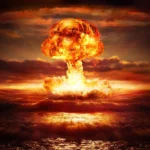Russian dictator Vladimir Putin recently signed an updated decree on the nuclear doctrine of the Russian Federation, which has caused significant international resonance. The document sets new conditions for the use of nuclear weapons and expands the interpretation of the concept of “threat to Russia.” What does it contain and should we expect the worst?
What the document contains
According to the published text, Russia has identified five conditions under which nuclear weapons may be used:
- Launching ballistic missiles against Russia or its allies. If the launch of missiles that threaten the Russian Federation is detected, this is a basis for a nuclear strike in response.
- Use of weapons of mass destruction. An attack on the territory of Russia, its allies, or military targets outside of Russia is considered a direct reason for a nuclear strike.
- Disruption of critical infrastructure. For example, attacks on strategic energy facilities or command centers.
- Aggression against Russia or Belarus with conventional weapons. If this poses a threat to their sovereignty or territorial integrity, Russia reserves the right to respond with nuclear weapons.
- Massive attack using air and space means. This includes strategic aviation, cruise missiles, drones, hypersonic aerial vehicles, etc.
Potential Targets
Although specific targets are not named, experts suggest that potential Russian nuclear strike targets may include:
- NATO strategic bases in Europe. Specifically, targets in Poland, Germany, Lithuania, Latvia, and Estonia.
- Decision-making centers in the United States. Washington, New York, and other major cities could be considered primary targets.
- NATO military facilities of allies. For example, U.S. bases in Japan or South Korea, if Russia perceives these countries as a threat.
- Ukrainian cities. Against the backdrop of the ongoing war, Moscow may consider Ukrainian infrastructure as a strategic target.
Geopolitical Context
This doctrine updates the previous 2020 edition, which already caused concern in the global community. The new document, in particular, focuses on “aggression from a non-nuclear state with nuclear support.”
Experts believe that these provisions are a reaction to the rapprochement between NATO countries and Ukraine, as well as the development of modern technologies, including drones and hypersonic weapons, which Russia perceives as a potential threat.
Implications for International Security
The new document strengthens the Kremlin’s rhetoric regarding readiness to use nuclear weapons. This raises concerns among Western countries, which see this as a signal for further escalation.
Many states, including the U.S., Germany, and the U.K., have already expressed concerns. They call for increased sanctions against Russia and strengthening NATO’s collective defense.
Will the Doctrine Become a Real Challenge?
Despite the Kremlin’s strong statements, experts believe that the use of nuclear weapons will remain a last resort scenario, as it would have catastrophic consequences for the entire world. However, this doctrine definitely increases global tension and forces countries to seek new ways to counteract.
So the question remains open: is this an attempt by Russia to strengthen its position in the world, or another signal for serious changes in geopolitical reality?


